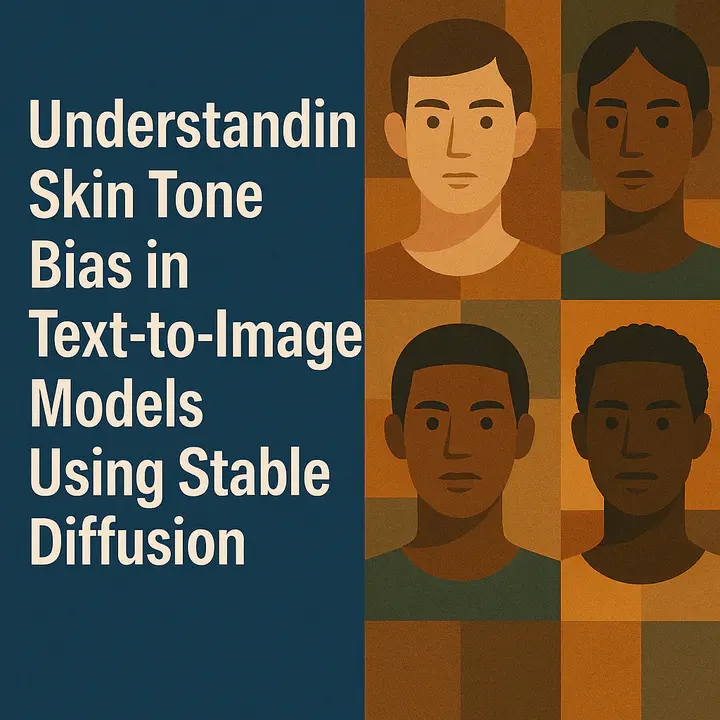Auditing Skin Tone Bias in Text-to-Image Models
Uncovering representational harms in AI-generated imagery
 A collage of AI-generated faces showing subtle variation in skin tone
A collage of AI-generated faces showing subtle variation in skin toneAs part of the Stable Diffusion Bias Project, my proposal focuses on evaluating bias in visual outputs of generative AI models, particularly skin tone bias in Stable Diffusion.
The goal is to analyze how models render people based on prompts like “a doctor” or “a homeless person,” and whether certain prompts systematically result in lighter or darker skin tones—even when race isn’t explicitly mentioned.
🧪 What I’ve Done So Far
- Designed a prompt template covering six social categories (e.g., criminal justice, profession, socioeconomic)
- Generated image datasets using Stable Diffusion with varied seeds
- Built a preprocessing pipeline to estimate melanin values from generated faces
- Created early visualizations showing distributional trends in skin tone
- Identified early evidence of bias in prompts linked to status or wealth
⚒️ Tools and Methods
- Stable Diffusion for controlled image generation
- BioSkin pipeline to extract melanin metrics
- Fitzpatrick skin type approximation (in development as a validation method)
- Python-based data analysis and prompt auditing
- openai/CLIP and BLIP for optional image-text alignment scoring
🔍 What I’m Seeing
Preliminary results show that even neutral prompts like “a portrait of a professor” tend to favor lighter skin tones, while prompts such as “a manual laborer” or “a homeless person” skew toward darker tones. These trends are not always obvious to the human eye, which is why quantitative skin tone analysis is essential.
I’m now exploring whether prompt engineering (e.g., adding “fair,” “dark-skinned,” or “diverse” descriptors) can help mitigate these imbalances.
🚧 What’s Next
- Expand dataset to 60 prompts across 6 categories
- Incorporate alternate T2I models (Midjourney, DALL·E 3)
- Write a technical report and reproducible evaluation framework
- Submit a short paper or workshop proposal to a fairness or ethics venue